A Beginner's Guide to Yoga Terms in Chinese
December 22, 2021
Namasté! If you’re considering taking yoga classes in Chinese, you may find it helpful to familiarize yourself with some Chinese yoga lingo.
Today, we want to help you expand your Chinese yoga vocabulary. It will help you to breathe and stretch properly and avoid any extra translation effort when you try to relax your mind.
First, let’s start with some background.
What is Yoga?
Nowadays, yoga is often practised as an art of healthy living, which is why it has taken China by storm. Originating from India, yoga has gained large popularity in the Western world since the 1960s and has started to become really trendy in China since the turn of the millenium.
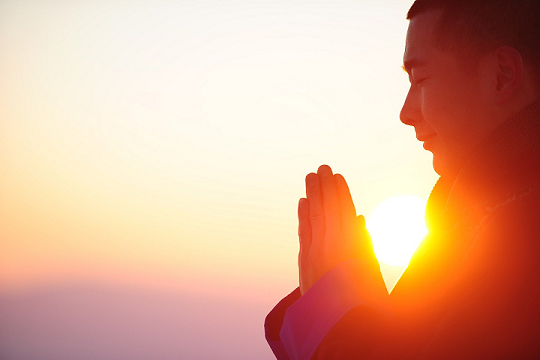
How did Yoga arrive in China?
Early introducers of yoga to China were Indra Devi, the first female disciple of famous yoga guru Krishnamacharya, who opened a yoga school in Shanghai in 1939 in the home of Chiang Kai-shek’s wife, and Zhang Huilan, also known as Wai Lana, the mother of Chinese yoga, who guided Chinese housewifes through an instructional yoga TV series on CCTV in the 1980s and 90s.
However, it wasn’t until the early 2000s that the first yoga centres sprung up in China’s big cities.
Nowadays, you don’t have to look far to find a yoga class in China that may suit you.
How do you say Yoga in Chinese?
瑜伽 yú jiā! The Chinese term for yoga is a loanword. It has simply been transliterated to sound as close as possible to the original word “yoga“. The word “yoga”, on the other hand, has Sanskrit roots and means “joining“ or “connecting“ your individual to the universal consciousness, creating harmony between body and mind, self and universe.
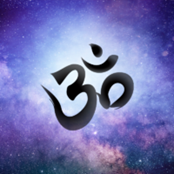
Common Yoga terms
So, what are common terms you will find useful when doing yoga in Chinese? First of all, you will engage your entire body, so brushing up on your body parts vocabulary will be a good idea.
Next, yoga contains a lot of breathing, stretching and moving in all directions. Let’s start with some basics:
| Relax | 放松 | fàng sōng |
| Stretch | 伸展 | shēn zhǎn |
Breathing is super important in yoga, as movements are often synchronized with inhaling and exhaling, and sometimes holding your breath:
| Breathe | 呼吸 | hū xī |
| Inhale | 吸气 | xī qì |
| Exhale | 吐气 | tǔ qì |
| Hold your breath | 保持吸气 | bǎo chí xī qì |
Some other typical activities:
| Straighten | 打直 | dǎ zhí |
| Arch | 拱 | gǒng |
| Bend | 弯 | wān |
| Backward bend | 后弯 | hòu wān |
| Forward bend | 前弯 | qián wān |
| Roll | 卷 | juǎn |
| Raise | 举 | jǔ |
| Lower | 弯向下降 | xiàng xià jiàng |
| Lift | 抬起 | tái qǐ |
| Push | 推 | tūi |
Yoga is a great workout, as you move in all directions:
| Move forward | 往前 | wǎng qián |
| Move backward | 往后 | wǎng hòu |
| Move up | 往上 | wǎng shàng |
| Move down | 往下 | wǎng xià |
| Move right | 往右 | wǎng yòu |
| Move left | 往左 | wǎng zuǒ |
And in synch with your moves, your eyes will follow:
| Look ahead | 目视 前方 | mù shì qián fāng |
| Look down | 目视 下方 | mù shì xià fāng |
| Look up | 目视上方 | mù shì shàng fāng |
Essential yoga vocab in a nutshell!
Yoga Poses (式 shì) in Chinese
For a more practical approach, let’s look at the Sun Salutation, which is a well-known sequence at the heart of yoga. It is comprised of a series of poses that stretch and align the entire body while synchronizing your breathing with your movements.
Mountain Pose 山式 shān shì (Tadasana)
The starting pose for yoga is called the Mountain Pose 山式 shān shì, in which you stand upright, feet parallel, with a straightened back. Breathe slowly and deeply.
| Stand up tall with straight legs | 双腿伸直站立 | shuāng tuǐ shēn zhí zhàn lì |
| Straighten your back | 背打直 | bèi dǎ zhí |
| Breathe | 呼吸 | hū xī |
| Inhale | 吸气 | xī qì |
| Exhale | 吐气 | tǔ qì |
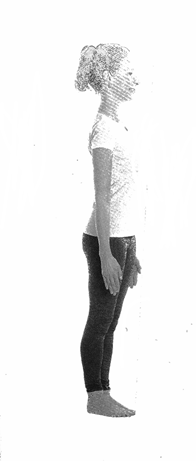
The Sun Salutation 拜日式 bài rì shì

The Sun Salutation (拜日式 bài rì shì in Chinese, or Surya Namaskar in Sanskrit) literally means "salute the sun pose" and is made up of twelve individual poses (式 shì) which smoothly flow into one another:
1. Prayer Pose 祈祷式 qí dǎo shì (Pranamasana)
Put your palms together, with your thumbs lightly against your chest, and look ahead. Breathe slowly and deeply.
| Namasté (palms together) | 掌心/合十 | zhǎng xīn/hé shí |
| Look ahead | 目视 前方 | mù shì qián fāng |
| Breathe | 呼吸 | hū xī |
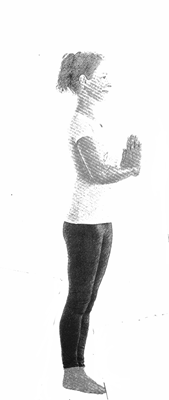
2. Raised Arms Pose 展臂式 zhǎn bì shì (Hasta Uttanasana)
Raise your arms over your head while gently arching back, inhaling.
| Raise your hands over your head | 双手举过头顶 | shuāng shǒu jǔ guò tóu dǐng |
| Arch your back | 拱背 | gǒng bèi |
| Inhale | 吸气 | xī qì |
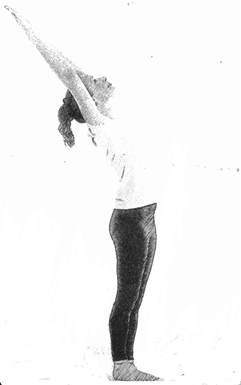
3. Standing Forward Bend 站立前屈式 zhàn lì qián qū shì (Padhahastasana)
Bend forward and down with your arms stretched out, exhaling. Keep your knees straight and your head close to your knees. Breathe evenly.
| Bend forward | 前弯 | qián wān |
| Exhale | 吐气 | tǔ qì |

4. Low Lunge or Equestrian (“Horse Riding“) Pose 骑马式 qi mǎ shì (Ashwa Sanchalanasana)
Inhaling, lift your head and look forward. Ground your hands and take a big step back with the right foot. Roll your spine back and push your chest forward.
| Inhale | 吸气 | xī qì |
| Lift your head | 抬起头 | tái qǐ tǒu |
| Big step back with your right foot | 右脚向后一大步 | yòu jiǎo xiàng hòu yī dà bù |
| Push your chest forward | 胸部推向前方 | xiōng bù tūi xiàng qián fāng |
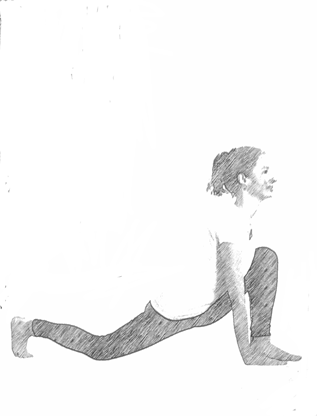
5. Plank 棒式 bàng shì (Kumbhakasana)
Bring your left leg back, coming into a plank position. Your hands are under your shoulders. Hold your breath.
| Bring your left foot back | 左脚向后迈一大步 | zuǒ jiǎo xiàng hòu bian yī dà bù |
| Your body is in a straight line | 身体呈一条真线 | shēn tǐ chéng yī tiáo zhí xiàn |
| Hold your breath | 保持吸气 | bǎo chí xī qì |
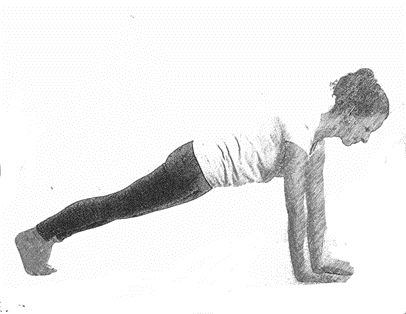
6. Eight Point Pose 八肢點地式 bā zhī diǎn dì shì (Ashtangasana)
While exhaling, lower your knees to the floor and bend your elbows. Let your chest and chin touch the floor. You gaze down.
| Exhale | 吐气 | tǔ qì |
| Lower your knees to the floor | 膝盖向下降 | píng xī gaì xiàng xià jiàng |
| Bend your elbows | 弯曲手肘 | wān qū shǒu zhǒu |
| Lower your chest to the floor | 胸部向下降 | xiōng bù xiàng xià jiàng |
| Look down | 目视 下方 | mù shì xià fāng |

7. Cobra 眼镜蛇式 yǎn jìng shé shì – or simply 蛇式 shéshì (Bhujangasana)
On your inhale, slide your body onto the ground and then forward and upward, coming into the cobra pose. Your head and chest are lifted.
| Inhale | 吸气 | xī qì |
| Body forward and upward | 身体向前向上 | shēn tǐ xiàng qián xiàng shàng |
| Spine is rolled back | 脊柱后卷 | jǐ zhù hòu juǎn |
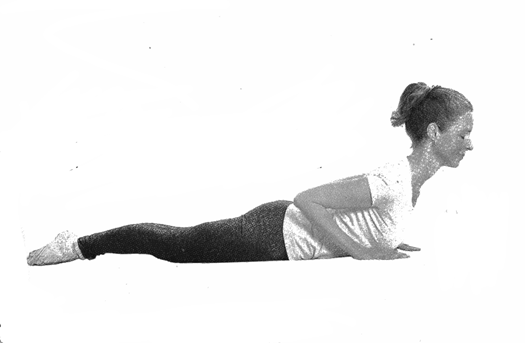
8. Downward Dog Pose 下犬式 xià quǎn shì (Adho Mukha Śvānāsana)
On your exhale, push the floor with both hands, move your hips back and up into Downward Facing Dog. Your chest moves towards your thighs. Stretch your arms. Press your heels towards the ground.
| Exhale | 吐气 | tǔ qì |
| Push the floor with both hands | 双手推地 | shuāng shǒu tuī dì |
| Hips up | 臀部 向上 | tún bù xiàng shàng |
| Straighten your knees and arms | 双膝手臂打直 | shuāng xī shǒu bì dǎ zhí |
| Heels towards the ground | 脚跟落地 | jiǎo gēn luò dì |
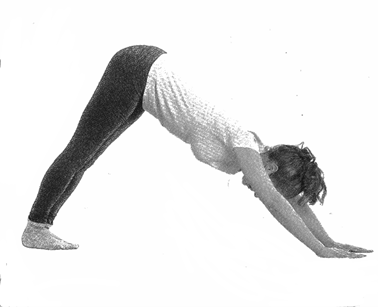
9. Low Lunge or Equestrian (“Horse Riding“) Pose: 骑马式 qi mǎ shì (Ashwa Sanchalanasana)
Inhaling, go back into the Equestrian Pose. Bring the right foot forward. Look ahead.
| Inhale | 吸气 | xī qì |
| Big step forward with your right foot | 右脚向前一大步 | yòu jiǎo xiàng qián yī dà bù |
| Look ahead | 目视 前方 | mù shì qián fāng |

10. Standing Forward Bend 站立前屈式 zhàn lì qián qū shì (Padhahastasana)
On your exhale, go back into Standing Forward Bend by stepping your left foot forward to meet your right foot. Straighten both legs as much as comfortable while bending down with your arms stretched out, keeping your head close to your knees.
| Exhale | 吐气 | tǔ qì |
| Big step forward with your left foot | 左脚向前一大步 | zuǒ jiǎo xiàng qián yī dà bù |
| Bend forward | 前弯 | qián wān |

11. Raised Arms Pose 展臂式 zhǎn bì shì (Hasta Uttanasana)
On your next inhale, slowly unfold, lifting your arms over your head while gently arching back.
| Inhale | 吸气 | xī qì |
| Raise your hands over your head | 双手举过头顶 | shuāng shǒu jǔ guò tóu dǐng |
| Arch your back | 拱背 | gǒng bèi |

12. Prayer Pose 祈祷式 qí dǎo shì (Pranamasana)
Exahling, put your palms together, with your thumbs lightly against your chest, and look ahead.
| Exhale | 吐气 | tǔ qì |
| Look ahead | 目视 前方 | mù shì qián fāng |
| Namasté (palms together) | 掌心/合十 | zhǎng xīn/hé shí |

If there is a Sun Salutation, there is of course also a Moon Salutation, and lots of other yoga poses, too! There are different styles of yoga and plenty of yoga equipment that you may need, depending on what type of yoga you practice. If you want to learn more yoga lingo in Chinese, message us to let us know!
Post contributed by Jana 雅娜
Images by Yoga Vidya